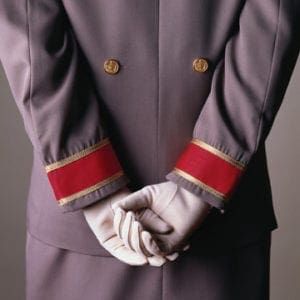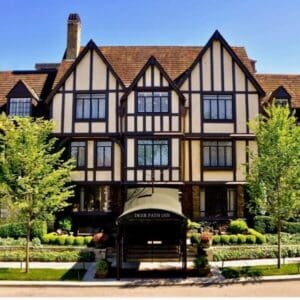
The modern hotel is not only a place for a good night’s sleep; it’s a place to see and be seen. Lobbies all over the world are being refitted to accommodate a renewed vigor for what is popularly known as ‘The Third Space’ or ‘The Third Place’, both denoting a public locale that serves a hybrid role somewhere between the home and the office.
The third space is one of productivity but also relaxation; one of quiet reflection but also socialization; one of sustenance but also libation. As the average workday trends away from a strict nine-to-five protocol, we are witnessing the rise of a labor force that thrives on this blending of the first and second spaces.
Now, with the New Year’s clock ticking down, undoubtedly a lobby remodeling (or modifying of another well-trafficked space) to fit this new standard is on many of your resolution lists. Rightfully so, there is a powerful connection between the overall atmosphere of a property and guest satisfaction, which is crucial for achieving high TripAdvisor scores and a healthy number of return visits. But renovations of this magnitude are seldom cheap, quick or without widespread tinkering behind the scenes (budget, staffing, supply chain management and so on).
As examples of two chains that have gotten it right from my own experiences, I refer you to W Hotels and the Library Hotel Collection. While there’s no telling how the Marriott acquisition of Starwood will affect the former’s presentation, what can be said about the current iteration of W Hotel locations is that each is considered ‘the place to be’ by young to middle-aged travelers. The attraction here comes from a convergence of many features including sleek design features, interactive spaces that are also visually stimulating, artful décor and comfortable, lounge-esque furniture arrangements.
Next, as a brand of only six boutique properties, Library Hotel Collection exists on the other side of the spectrum. Here, the concept of the living room is played to the extreme whereby the lobby area is transformed into a communal room with free WiFi, magazines, snacks and beverages, all available 24/7 – it’s an irresistible congregation point for guests to intermingle.
Thinking of what these two leaders are doing right as well as considering many other properties that have something exceptional to offer in this regard (looking at you, Virgin Hotels Chicago), the essence of the third space can be distilled into three salient factors for which the upgrade costs are not blatantly prohibitive.
- Your F&B must be great. Meal time is conservation time, while meet-ups for coffee or cocktails are also a staple of our culture. An army of customers runs on its stomach after all, and you shouldn’t give guests or locals a reason to venture elsewhere by being lousy in this arena. While a total menu overall can be quite daunting, for the third space angle, abide by the ‘keep it simple’ motto. It’s better suited to today’s fast-paced, grab-and-go lifestyle to have a simple, dozen-items-or-less menu – for both food as well as for drinks – than it is try to cater to every single person’s specific, whimsical desires. A short menu will quicken consumer decision making, help reduce ingredient costs and streamline service delivery. Moreover, focusing on only a few items will ensure that each is exceptional.
- Think café, not nightclub. It’s a common misconception when approaching the topic of third space redesigns to opt for mood lighting and a constant drumming of electronic lounge music as curated by a wannabe DJ off in one corner. The problem with this atmosphere is that when the tunes are too loud, it makes groups insular, and reducing the room’s brightness prevents people from seeing their surroundings – both of which are inhibitors to communal conversations. Instead, such third spaces must be suitable for play as well as for work. Comfortable table settings with available power outlets and zippy WiFi are both tremendously important. A good litmus test is that patrons seated anywhere in the designated space should be able to hear the grinding of coffee beans from the barista counter – always a pleasant sound. While your décor may emulate that of a nightclub as a means to entertain the eyes, it can’t be too dark as to prevent reading and it must be congruent with the overall theme of the hotel.
- Your team is as much the attraction as the place. Think back on Rick’s Café Americain in Casablanca. Yes, I realize that I’ve inculcated this example, but it still gets the point across. The source of all the hubbub is a stellar combination of an inviting host in the form of Humphrey Bogart, Sam on the piano and a well-oiled staff operating as efficiently as the Nazi army stationed just outside of town. Effervescent servers and the presence of managers on the floor both do wonders towards facilitating friendly banter, acting as the connective glue between disparate parties of guests and elevating the overall mood. Moreover, consider turning your chefs into celebrities by properly promoting them on the website and having them make the occasional front-of-house appearance.
About the author
 Larry Mogelonsky is the founder of LMA Communications Inc. (www.lma.ca), an award-winning, full service communications agency focused on the hospitality industry (est. 1991). Larry is also the developer of Inn at a Glance hospitality software. As a recognized expert in marketing services, his experience encompasses Four Seasons Hotels & Resorts and Preferred Hotels & Resorts, as well as numerous independent properties throughout North America, Europe and Asia. Larry is a registered professional engineer, and received his MBA from McMaster University. He’s also a principal of Cayuga Hospitality Consultants, an associate of G7 Hospitality and a member Laguna Strategic Advisors. His work includes three books “Are You an Ostrich or a Llama?” (2012) and “Llamas Rule” (2013) and “Hotel Llama” (2014). You can reach Larry at larry@lma.ca to discuss any hospitality business challenges or to review speaking engagements.
Larry Mogelonsky is the founder of LMA Communications Inc. (www.lma.ca), an award-winning, full service communications agency focused on the hospitality industry (est. 1991). Larry is also the developer of Inn at a Glance hospitality software. As a recognized expert in marketing services, his experience encompasses Four Seasons Hotels & Resorts and Preferred Hotels & Resorts, as well as numerous independent properties throughout North America, Europe and Asia. Larry is a registered professional engineer, and received his MBA from McMaster University. He’s also a principal of Cayuga Hospitality Consultants, an associate of G7 Hospitality and a member Laguna Strategic Advisors. His work includes three books “Are You an Ostrich or a Llama?” (2012) and “Llamas Rule” (2013) and “Hotel Llama” (2014). You can reach Larry at larry@lma.ca to discuss any hospitality business challenges or to review speaking engagements.
This article may not be reproduced without the expressed permission of the author.



















